... we noticed a new addition to their holiday decor: a stunning grouping of Christmas balls dangling over their spectacular escalators!
Clients were still lined-up in queues for the exclusive brands. Bypassing them for the regular Men's Department, I found the cutest pair of "Geometric Snowmen" socks.
From there, we explored the Women's Department. Lewis perused hats, gloves, and handbags for his mom. We were dismayed by the quantity of saleswomen who couldn't communicate in English. (At least the one who sold the socks to me was cheery about our language barrier). However, Lewis' type of purchase required more discussion, and it was surprising that the best store in the nation's capital wasn't staffed with more English-speaking associates... especially since nearly all of its visitors use English as the common language.
We meandered into another Lady's Section. The gay man working in the lingerie area smiled warmly at us. However, Lewis was preoccupied with a French assortment of leather goods made by Le Tanneur.
The saleswoman seemed like an experienced "veteran" in the industry. When she discovered that we were New Yorkers, she bashfully apologized that her English fluency could be better. We assured her that she communicated very well, and we valued her self-abasing personality. Previously, she was a self-employed interior decorator, but the pandemic caused her to change careers. Dutifully, she described the brand's pedigree and processes, but she was equally awed that we were visiting her city from New York.
When she heard our compliments about the city being clean and quiet, she looked astounded. In her opinion, it was unclean and noisy. She apologized profusely for how dirty it was, as compared to her hometown city of Munich. We convinced her that it was hugely cleaner than the squalor of NYC. Like many beguiled admirers of New York City, she is a fan of the pro-NYC television show Sex And The City. Politely, Lewis informed her that she was duped by the show, which unashamedly hides the city's filth, violent crime, and corruption... and falsely lures people to overpay to be there. Thanks to social media, that truth is becoming more widely-known. Tourism to NYC from first-world nations is failing. (Recently, the powers that own NYC compelled America's entertainment industry to do more promotions. So, the vocal group named NSYNC released a Christmastime album titled Christmas in New York, and Maria Carey was coerced into having a lottery where the prize is a week with her in NYC to go shopping. They prefer to perpetuate falsities, instead of fixing the city).
After Lewis decided on a supple wallet for his mom, he obliged the woman with tips for her intended trip to Manhattan. Like countless uniformed tourists—who only believe what NYC's promoters and Time Out New York lie about—she intended to spend her time seeing the World Trade Disaster Site (a big hole in the ground), the Statue of Liberty (long lines to enter a tower with tiny windows at the top that don't have a view—and the statue was used to falsely lure millions of poor immigrants into America's sweatshops, child labor, dangerous factories, deathly railroad construction, and overworked steel foundries), and Times Square. Behind its bright lights, the despicable filth of Times Square can truly be seen via this link...
Instead of those "tourist traps", we guided her to create a list of places that local Manhattanites go: the West Village, SoHo, Public Library on Fifth Ave., Metropolitan Museum, the free museum at the Fashion Institute of Technology, several amazing eateries, and Riverside Park (safer than Central Park in the current crime-wave that remains unstopped by the uncaring-yet-overpaid NYC police). She was thrilled with gratitude! Speaking to Lewis, she was "honored" to meet a true born-and-bred Manhattanite. Manhattan has a residential population of 1.6 million people, and one million commuters enter it every weekday. Yet, few people are born and grow-up in Manhattan. People like Lewis are rarities. The woman said that he also exemplified how Germans imagine a New Yorker to be: urbane, stylish, witty, cultural-minded, and friendly. (She will be disappointed when she gets there).
Since her area wasn't busy, we lingered together and discussed the dwindling population of German immigrants in NYC. I enlightened her with a tale that is posted on an official sign near our condo. Here it is...
In the 1840s, Prussian and German immigrants inhabited a large tract of land on Manhattan’s Lower East Side, nicknamed Little Germany. Their prominent church was Saint Mark’s Lutheran Church, and their civic leaders were members. Alas, rich racist New Yorkers detested them, and realty developers were envious of that land for “luxury high-rise” buildings. Every summer, the church had a picnic on Long Island. Historians hypothesize that evil schemers used that annual river journey to eliminate the German community’s leadership. Steamships in NYC were notoriously corrupt and operated by a cartel monopoly that used outdated boats but charged outrageous prices. It is plausible that a steamship company colluded against the immigrants and chose its worst ship to be destroyed.
In 1894, a paddlewheel steamship named General Slocum endured three calamitous accidents. In 1898, it had its second collision with another boat. In 1902, it ran aground for the third time. It and its crew were not reliable. Yet, in 1904, it was suggested to the leaders of Saint Mark’s for their picnic, and 1,300 immigrants got aboard. Soon after the voyage began on the East River, a suspicious fire erupted in the forward cargo area. It was fueled by oily rags and spilled quantities of lamp-oil that were “coincidentally” there. Near that same area, the ship inexplicably had a locker full of flammable paint and a room full of gasoline. Witnesses testified that the fire was reported to the captain, but he disregarded it for ten minutes. When the flames engulfed the front of the ship, he irrationally avoided going to Astoria’s shore. Instead, he stayed on the water—and he maniacally accelerated to full speed… which fanned the flames into a larger blaze! During the inquest, he claimed that he didn’t steer the vessel aground in Astoria to protect people/buildings there. (No buildings existed there). Instead, he steered it to North Brother Island, which was in the middle of a wide bay, near the Bronx. Nobody believed him, except the notoriously corrupt NYC judicial system.
The inadequacy of the ship’s safety equipment was inexcusable. Its rich owners had made no attempt to maintain anything. (That still is typical of NYC today). The fire hose was made of “cheap linen” and had rotted with holes. Survivors attested that the lifeboats were either wired shut or painted shut, so they were inaccessible. Life preservers fell apart in people’s hands because the useless things were 13-years-old from 1891. Life-vests were filled with pieces of metal—to falsify their weight during inspections—and caused people to drown. It was outrageous that NYC Safety Inspectors approved those conditions one month before the voyage! 1,021 passengers died, but not the captain or his crew. Deaths included members of Little Germany’s most-established families: the social foundation of the community. Survivors revealed that the crew never tried to use the ship’s hand-pumps or buckets to extinguish the fire. NYC’s notoriously-corrupt police had no interest to find a culprit. The ship’s greedy owners at Knickerbocker Steamship Company were never prosecuted, and the corrupt safety inspectors were excused. The captain was the only person convicted for a short time before being pardoned by President Taft. (Since 1809, “Knickerbocker” was a nickname for Manhattanites, and it was used by the elite—the same industrialists who “owned” President Taft. Their private club was the Knickerbocker Club that still exists). After the indignity of mass-deaths and seeing the responsible men being absolved, German immigrants began an exodus out of Little Germany, and the community disappeared. They migrated uptown to an area named Yorkville, centered on East 86th Street (New Yorkers nicknamed it Sauerkraut Street), and they coexisted with forlorn Irish immigrants who toiled as servants, factory workers, and aqueduct laborers.
*Since 1840, America was discriminatory and cruel against German immigrants, and they suffered mass-murders, lynching, hostility in underpaid jobs, and religious intolerance. America's prejudice didn't lessen until the 1960s. To see what immigrants overcame, please use this link:
https://halfwindsorfullthrottle.blogspot.com/2015/09/america-land-of-free.html
Having seen hundreds of tourists, the woman gave us an honest compliment that we were the nicest and most-candid ones that she met—especially from the USA. We are often told that we possess more authentic niceness than most Americans, our "sparkle of being interested" in people doesn't fade quickly, and we actually do what we say we will do.
Riding the wood-paneled escalators up to the top level, we admired more advent calendars and salivated from the aromas of fresh cooking.
Fascinated with the gold-leaf pastries, Lewis made this video of them...
We paused again in the section for chocolates and cookies (biscuits). Wowed by artisanal craftsmanship, Lewis bought a box of chocolate-covered marzipan (for his coworkers in SoHo) made by Niederegger. At the time, we were unaware of the company's pedigree, but I will tell you. The confectioner was founded in 1806, and it is still family-owned.
As you can see from the logo, it is made in the "Hanseatic City of Lübeck". The city keeps that title because it earned it in the 1300s as the most powerful part of the Hanseatic League: a medieval mercantile monopoly headquartered in London that every European city wanted to join (but couldn't). In 1375, Emperor Charles IV named Lübeck as one of five "Glories of the Empire"—equal to Venice, Rome, Pisa, and Florence. Invented there, marzipan was a luxury exported from Germany during that era.
In 1996, the city was awarded international status as a Protected Geographical Indication by the European Union. By law, its marzipan must achieve high quality requirements and be made with classic and principled manufacturing.
Traditionally, Niederegger uses less sugar in its "secret recipe", so its marzipan has a richer natural flavor. Therefore, it was desired by Europe's kings and emperors. In 1856, the company was appointed to provide luxurious chocolates to the imperial family of Russia. In 1908, it received a Royal Warrant from the Kaiser. In recent decades, the German government used it in gifts to Queen Elizabeth in the United Kingdom. Annually, the company produces 30 tons of sweets, which are exported to 35 countries. Coming from America—where anything with fame or an endorsement gets an exorbitant cost—we were greatly impressed that German products with heritage, awards, and EU designations are still priced affordably. If you see these specialities, buy them!

From our worldly travels, we are familiar with Royal Warrants, and seeing one is what prompted Lewis to buy a tin of spice cookies made by Haeberlein-Metzger.
The Art Nouveau artwork on the tin is beautiful. At the bottom, the company's trademark is Saint George, the dragon-slayer.
Seen in the middle is a coat of arms and the names of two royal families that bestowed their Royal Warrants on the company. In 1840, Heinrich Haeberlein chose a pioneering method of using a steam engine to help bake his lebkuchen cookies in Nuremberg. The company was awarded the title of Purveyor to the Imperial Court of Austria, to supply the Austrian monarchy. Next, it was granted a Royal Warrant by the King of Bavaria. Even in today's Republic of Germany, companies are proud of their hard-earned heritage and promote those Royal Warrants, which still evoke an excellent reputation and an aura of high quality.
Yes, remember that—despite celebrity prestige—European prices are not as outrageous as American ones, as proved here...
*The King of Bavaria bestowed a royal warrant on a stained glass maker who supplied windows to the church near our home in Astoria. To see the beautiful windows, please use this link:
We were further impressed to discover that lebkuchen from Nuremberg is a German food with Protected Designation of Origin status! By law, it must be produced in the boundaries of that city via unchanged traditional methods. Enforcement of quality is commonplace in the European Union and UK.
Toting our KaDeWe bags, we experienced a satisfying relief that we walked in a safe city. During this entire year, shoppers in Manhattan are fearful of being robbed when they carry shopping bags with well-known brands and logos on them. As I said, the world's highest-paid police force hasn't done much to stop that. Unchanged since 1870, NYC's authorities don't care because they assume that people will always want to come to their city. (Living as if they were in Versailles, they are uncaring that the internet is full of videos showing the city's unstopped violence, looting, and crime. Now, other nations warn their citizens about visiting NYC... and America overall).
It was delightful to saunter on an upscale retail avenue that was actually pretty! America's highest rents are for dirty properties on ugly streets in Manhattan: Madison Avenue, Fifth Ave, Park Ave, Lexington Ave, and Ninth Ave. Better than any of them, Berlin's Kleiststrabe and Tauentzienstrabe (seen below) are beautified with grass, ornamental shrubbery, park benches, and a central pedestrian walkway. In addition, the streets are lined with trees.
Lewis and I noticed many dapper pedestrians. Hats are popular in Berlin for all ages... especially berets and fedoras.
We walked north until we arrived at the city's zoo. It is the most-visited one in Europe! A Chinese gate is the entrance.
We had trouble finding the Ticket Counter to buy admission tickets. There were no signs or indications, and all the windows were "grayed out". They resembled office windows—not ticket-buying ones. After we paced back and forth, one of those windows finally changed for opaque to clear (a nifty technology) and a woman—who chewed on her snack—gestured us to approach her. We bought two tickets for the zoo and its adjoining aquarium: €23 each.
Entering the park-like zoo, we admired its leafy interior and tree-lined pathways.
Apropos of its Chinese gate, the zoo gives prominence to its panda bears. It was our first time seeing pandas! The world only has 1,600 of them. Due to their endangered rarity, only 50 live outside of China. Only three zoos in America's 50 states have some. The trio in Berlin were born in that city, yet China claims ownership of all pandas, but lets Germany keep them "on loan". That situation began during the Tang Dynasty, in 685 AD, when the empress sent a pair of pandas to the Empire of Japan, and they spread.
Panda bears are solitary creatures, so it's rare to see them together. Unlike other bears, they never hibernate. At the Berlin Zoo, they are given a lot of land to live in, so you might not view them from the designated areas. Lewis and I were overjoyed to see two of them side-by-side! Within moments, we fortuitously saw the third one crossing a man-made stream. It was amazing to watch those peaceful and cuddly bears! Here is Lewis' video of it...
Being accommodating, the zoo created wooden chairs for them to sit in, so they can recline and eat. They nibbled on eucalyptus branches. Here are Lewis' videos of that, and two bears adorably rubbing noses together before eating...
Next, we observed a graceful herd of deer. Since our visit to London's deer park in 2021, it was only Lewis' second time seeing deer!
Above, we caught glimpses of the giraffes before they retreated to their high-doorway house for mealtime.
Interestingly, the hippopotamus area occupies the former site of a Nazi flak tower. The zoo had two, which were built in 1941 by Hitler's command to defend the city from Britain's Royal Air Force. Made of thick solid concrete, they demonstrated great German engineering. After the Nazis were overthrown, the Soviets and British had trouble demolishing them. They withstood two attempts, but the third—requiring four months and 35 tons of dynamite—leveled them.
Visitors are unaware of that, as they walk over the grass-covered rubble and admire the animals. Life goes on.
We entered the Petting Zoo so Lewis could give affection to wooly sheep. We are animal-lovers, and animals love us back!
We also saw the world's smallest Wild Cat.
We were lucky to admire a "pride" of lions when they were moving around. Every movement was majestic. Here are Lewis' photos...
Rays of sunlight illuminated the lion's mane, as Lewis made a video of his powerful stride. Please enjoy both videos....
From there, we segued to sea lions. Here is Lewis' video of their antics—with perfect timing to see multiple ones swim together...
It was a perfect transition to the waterborne creatures inside the Aquarium.
Please enjoy Lewis' videos of jellyfish, which are basic-yet-miraculous creatures...
*Later, we saw a sculpture of "public art" made of LEGOS shaped like a giraffe. That was an amusing coincidence.
Leaving the aquarium is also the exit for the zoo, which is why the staff suggests that you visit it after the zoo. Strolling south, we admiringly encircled the ruins of the Kaiser Wilhelm Memorial Church. It was erected in the 1890s by Wilhelm II to honor his grandfather, Kaiser Wilhelm I. (*Trivia: Begun in 1853, a region of San Antonio, Texas was named King William District to honor King Wilhelm of Prussia, who became Kaiser Wilhelm I of Germany. It is still a gorgeous area). However, it was damaged by a WWII air raid in 1943. Keeping the damaged spire as a remembrance of the war, Berliners restored the interior in 1956.
Lewis and I lunched at a homey Vietnamese restaurant named Pho 56. We were impressed that it existed in the upscale neighborhood because that never happened in any place that we visited in America (I visited 17 of America's states). If one did exist in a posh American neighborhood, it is either overpriced or full of mundanely inauthentic "pan-Asian" food.
Two young women were the only staff on duty, and they looked like college sophomores. At home, we would be skeptical of their competence, but those girls were tremendous. Not needing supervision, they paid attention to new customers, answered questions about the menu in fluent German, English, and Vietnamese, took orders, delivered food from the prompt kitchen, and routinely checked that everything was satisfactory. For the brisk afternoon, Lewis and I slurped on €8.60 beef pho, which was delicious! The big bowl was perfectly full of flavor!
It included glasnudel (glass noodles), beef, soybean sprouts, cucumber, onions, coriander, and a ginger kaffir broth.
Then, we ate €12 worth of squid with veggies, rice, and a prettily-carved portion of carrots!
While we ate, we noticed that half of the customers were Caucasian, and the other half were Asian. It's always nice to see a blending of cultures who appreciate good food.
After a satisfying lunch, Lewis and I walked east on Paris Street and paused at a Bakeshop named BäckerMann.
Some customers noshed outside at the tables and chairs.
Indoors, two showcases contained a plethora of perfection!
In Europe, some bakeries only sell bread or pastries. That one sold both. Its properiter is Herbert Heining, a Master Baker and Confectioner who creates Berlin's best bread. He publicly endorses a healthy assessment of Life/Work Balance and an awareness of personal limits during different phases of life. Entering his emporium of baked goods smelled wonderful!
Resisting a focus on "fast food", the bakery develops food with full flavors and natural ingredients that take time to make. Their motto is that "good bread is a piece of quality of life". That's the type of place that we want our things to come from! To make their signature "Root Rod", dough is made during the prior day so it rests for 18 hours before being dusted with rye flour and portioned. They seem to do everything well: cakes, tarts, cookies, sandwiches, and breakfast pastry.
We wanted bread to have with our pâté and foie gras in our hotel. We perused trays of spelt rolls, "cobbler boys", caraway buns, pretzel baguettes, and "knuckleheads".
The counter-woman tried to tell us which rolls were the softest. After a few moments of her fumbling for the right English translation, an elderly customer volunteered the answer in perfect English. It was an amusing moment, and we thanked the old woman for her helpfulness.
We chose two different buns—as per the woman's recommendation, and we got a loaf of wholemeal "country bread". To satisfy our craving for something sweet, I bypassed a Nut Currant Cake and a Gooseberry Meringue pie and got a slice of Gugelhupf Eggnog tart.
I also wanted to buy a slice of iced walnut cream cake, but Lewis deterred me.

Walking further, we popped into a grocery store. Once again, we marveled at the affordability! Nutella costs $11 in NYC, but the same size jar only costs €2.99 in the capital of Germany... and a similar brand is €1.10 less!
Enticed by the value-minded price of a €3 bottle of wine, we added it to our basket and paid the cashier.
*Throughout our travels in Europe, we noticed that cashiers in supermarkets and grocery stores are permitted to sit while they work. That is never allowed in America where cashiers must tirelessly stand on their feet during their entire shifts. The European standard is more sensible and has Life/Work balance.
We rode the Metro east to Potsdamer Platz Station.
We took a few moments to admire the dynamic and modern facility. We don't see such things at home.
Exiting the station, we were delighted to see that a Christmas Market was open at Potsdamer Platz! If you overpay to visit Manhattan and go to any of its six Christmas Markets, you will be disappointed because they are identical and full of mediocrity. All of the stalls are filled with the same cheaply-made trinkets that are sold by corporate-owned franchises. Everything is made in China; nothing is unique or hand-crafted. (Incidentally, China makes high-quality items, but greedy/cheap American companies only request things that are the cheapest to make, so America is inundated with low-quality items from China). Compared to that bland sameness, the Christmas markets in Berlin are delightfully different. Look at my images and see how that market compares to your nearest one?
Seen below, Europe's first traffic light from 1924 is a national landmark that remains in Potsdamer Platz...
Coerced by several travel videos that we watched before our trip, we tasted one of Berlin's currywursts. It was a mistake. We don't recommend them; they are merely hotdogs slathered with ketchup and dusted with curry powder. Thankfully, we saved €1 and avoided the bun. Germany is renown for well-made sausages and wursts; any of them are better than a currywurst.
However, a currywurst is still better than hot dogs from street carts in NYC. Those are so bad that the sellers try to make fun of them by nicknaming them "Dirty Water Dogs".
In another stall, an old woman sold currywursts in a bowls of fried dough, but it was not worth the €10 price. Avoid those.
My highlight was having a warm cup of mulled wine! In Germany, it is called Glühwein (glow wine) because it makes you "glow" with warmth and happiness. A Nordic variant is Glögg, which we drank in Finland and during Christmas dinners at NYC's 2-Michelin-star Scandinavian restaurant, Aquavit. The booths selling glühwein were the most-crowded. The first recipe for it emerged in the 2nd-century BC in ancient Rome, and its legions spread it across Europe. I love it!
I saved €3 by avoiding a glass and requesting a paper cup. It was delicious! The red wine was flavored with cloves, cinnamon, cardamom, ginger, and citrus rind. Some people added chopped almonds. Another booth sold it with star anise floating in each serving.
Feeling brazen from their mulled wine, some revelers paid to ride down a manmade slope on inflated tubes.
Everyone else paused from their homeward commutes and congregated outside for moments of mirth and socialization.
Seen below, we were wowed by the intricate and clever craftsmanship of the items sold at the Christmas Market...
Vendors equip their stalls with "store quality" lighting, displaying apparatuses, and machinery for customization.
It is better to buy something made individually by hand: inclusive of the creator's passion and ingenuity.
In its typical substandard inferiority, NYC's Christmas Markets cost twice the price but are merely filled with low-quality, mass-produced trinkets. Lacking quality, the intention is purely for profit, and that is further proved by the city's hordes of neglected homeless who loiter at the markets. It looks like this...
Honestly, we're unsure why people let themselves be deceived to overpay for Christmas in New York City. To see what it really looks like, please use this link...
After putting our things in our hotel room, we changed clothes, and walked to the taxi stand at the neighboring hotel. We hopped into a luxurious cab.
The Mercedes sped us to a theatre named Friedrichstadt-Palast, a.k.a. Palast Berlin (Berlin Palace).
It is situated in a historical area named for King Frederick I. He built it in 1691, on the outskirts of Berlin's city walls.
The area is now within the neighborhood of Mitte (within the borough of Mitte), and this is its coat of arms.
The first theatre was constructed 1873, and it contained circuses, nightclubs, and dance halls until 1919. In the 1920s, a rebuilt one featured musical theater performances and bourgeois operettas. In 1945, aerial bombardments wrecked it. It remained abandoned during the Cold War. The current theatre opened in 1984, and it is regularly updated. Thanks to German ingenuity and engineering, it is the largest and most-modern showplace in Europe! It is perfect for the intricate complexities of the variety-show titled Arise.
The interior retains its 1920s Art Moderne origins.
Spiffy bars and eateries exist on multiple levels to alleviate crowds, and customers can pre-order online to enjoy a snack and drink before showtime.
With 30,720 square-feet, the stage is the largest in the world. It has 1,895 seats with a generous amount of legroom (still unseen in most of NYC's penny-pinching theaters). After trekking 7.5 miles, it was awesome to stretch and cross our legs while seated.
After you see the images of the astounding show, you will not believe that the tickets for our prime seats were only €70 each! Since entertainment and Life/Work Balance is important in Germany, society bypasses greed and makes it affordable and accessible. Our seats were next to the VIP section—only four rows from the stage! Ideal. (NYC charges $300 for each ticket at a similar venue).


It was our second performance in Germany, and we were delighted with the comfy seats and spacious legroom. For comparison, we recently attended the Broadway musical Mrs. Doubtfire. It was a mediocre show, but another disappointment was from sitting in the newly-renovated Stephen Sondheim Theatre and enduring 2.5 hours in seats with no legroom! Greedy since the 1890s, Manhattan's theatre-owners personify Ebenezer Scrooge and refuse to give more legroom. Similar to airlines in America, they want to squeeze-in as many people as possible inside... for more profits. Unashamedly, they charge $300 per ticket for that discomfort, and it looks like this...

[As another comparison, NYC is a sham when it calls itself a “mecca of performing arts”. Amongst its burgeoning population of gullible actors lured to NYC, they are treated badly, underpaid and deprived of decent working conditions or performing spaces. (That's why NYC performers hold "cash buckets" after the show to get gratuities and tips). To merely find a cost-effective stage, they must endure a lack of air-conditioning, broken infrastructure, and neglected interiors (scuffed and torn furniture, outdated lights, patched walls, and peeling paint). Lewis’ friend created a performance with three other singers and a pianist. Despite the pandemic creating a void of shows, most theater owners remained outrageously expensive. Nonetheless, the undersized theater overcharged a fee of $25 per person, and it demanded that everyone purchase a minimum of two drinks: each priced at $17. That’s costly for a show that lasted only 1 hour and 20 minutes. Indicative of a sleazy owner, it was a Cash Only enterprise. Like many greedy NYC theaters, it also unnecessarily charged a “processing fee” for each online ticket. Furthermore, it lacked a Privacy Assurance Statement, yet it demanded each customer’s full name, phone number, and email address. It is probable that the scheming owner will resell that personal data to scammers and advertisers. We did not buy tickets online and won't return].
As a masterpiece of theatrics, the show has everything: impressive costuming, amazing lighting, actors, singers, three emcees, dancers, muscular gymnasts, shirtless acrobats, provocative burlesque, trapeze artists, fountains that arise from the stage, flamethrowers, and a full orchestra of 16 people: strings, woodwinds, brass, three percussionists, and three guitarists. Sometimes, a portion of musicians came forward to play Rock or Hip Hop music. In other scenes, a jazz quartet formed. For a dramatic moment, solos were given high above the stage by a saxophone and cello.
60 shapely dancers—from 26 worldwide nations—performed a slew of styles with precision and vivacity! Their smiles and internal happiness radiated into the audience—who stood and cheered repeatedly.
Seen above, many teenagers came in groups to watch the show. Evidently, German culture encourages everyone to see the reality of sexy dance-moves and erotic poses of burlesque. (Despite America's hedonism, its Puritan values prohibit people under the age of 21 from seeing performances where those types of eroticism are included).
We certainly admired the male dancers. Filled with energy, they poised every gesture, and many were dressed colorfully with sprays of sequins. The gymnasts possessed catlike ways of moving, and their firm thighs filled immaculate tights.
Guests can pre-order food & drinks for the 30-minute intermission. There are refreshment areas on every level, which reduces queues. Spaciousness ensures your enjoyment.
*[For another miserable comparison, when we returned to NYC, we attended a "Doris Dear singalong" at Manhattan's tiny Triad Theatre. Outrageously, the price of each ticket was $42.00, plus a "processing fee" of $6.00. It was also mandatory for everyone to purchase a "two drink minimum", and each was overpriced at $18.00 (almost as much as the Ritz Carlton).
The upstairs theatre was not handicap accessible, and the show only had 4 musicians who were off-key. After the show, the host hurried everyone out of the theatre (with barely any time for photos) because the greedy theater-owner had another show scheduled to use the space within 20 minutes and would issue a fine to the host if he wasn't gone. That's the overpriced crap offered in NYC for $84 each, yet we saw a magnificent show in the capital of Germany for only €72 each]. Where would you invest?
Thanks to the smartly-placed taxi stand, we seamlessly left the gorgeous theatre and entered a Mercedes van to go to dinner. As we rode along, I visualized some of the male dancers and gymnasts also being employed at the SIXX PAXX Theater. It was located on the next street from our hotel, and it looks like this...
We exited the taxi at a Japanese restaurant named Yakoolza. According to Google, it is open until 11 PM, every night. We arrived at 9:50 PM, yet the staff said that they were closed for the night (only letting the people inside finish eating). The other restaurants nearby were already closed/dark. Thanks to that inaccuracy with Google, we stood on the street and waited for a taxi to appear. Making it worse, Google Maps failed to load on my iPhone, so we didn't know where we were!
In daytime, Wilhelmstrasse is a thoroughfare. It was the center of government for the Kingdom of Prussia, German Empire, and (pre-Nazi) Weimar Republic. The name of the street is used to indicate the government as a whole—just as the British say "Whitehall". At night, it is desolate. After several minutes, we saw and hailed another taxi.
To satisfy our appetite, we visited the sushi bar next to our hotel: Sushi Goku. It served lunch, dinner, and late-night meals.
It looked modest, but its Japanese & German chefs were talented to make the time-consuming tamagoyaki: many layers of thin egg batter rolled into an omelette. They tasted great!
We ordered a variety of sashimi (€19 for 12 slices), nigiri (€5 for two), temaki (€9.50 each), and sushi rolls (€5 for 6).
We enjoyed the nicely-priced soft-shell crab buns for €6.50 each. They were succulent.
As an elegant detail, the restaurant provides dipping sauces in reusable glass jars. *When we bought dinner there again, we brought our jars back to them, and it made the girl very happy.
After our tasty meal, we finished our bottle of ice wine.
Join us for our finale!



















.JPG)



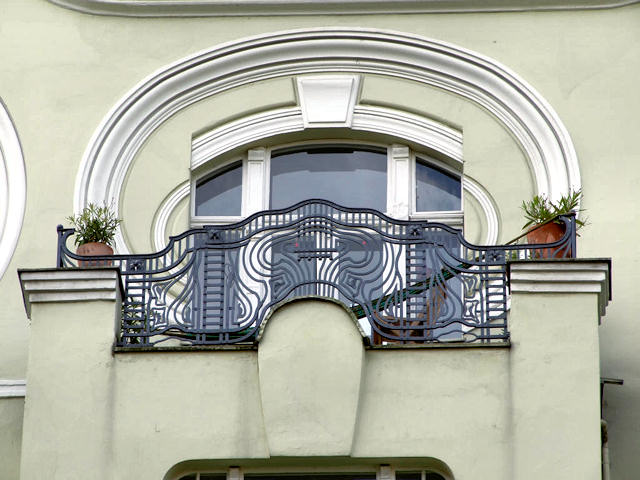
.jpg)




























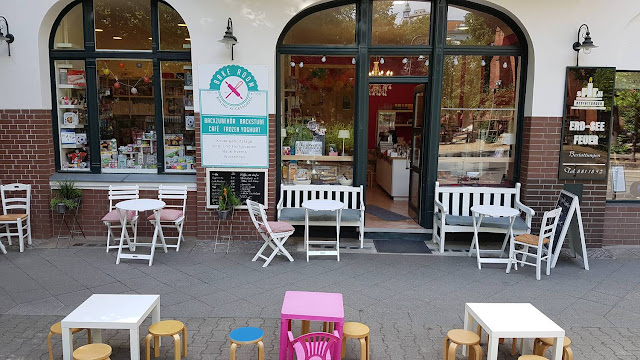





















































_logo.png)



































































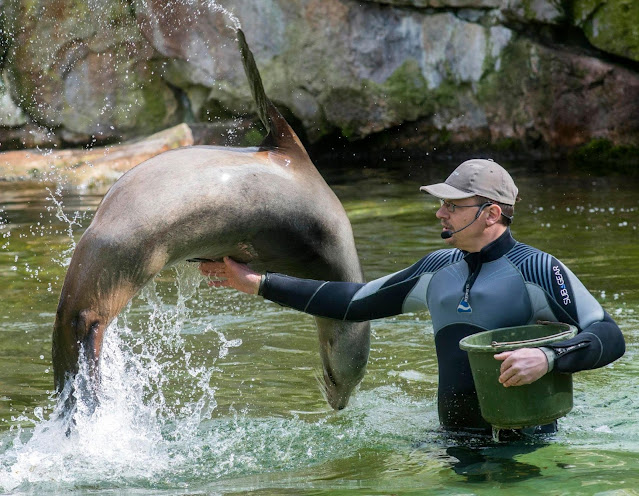





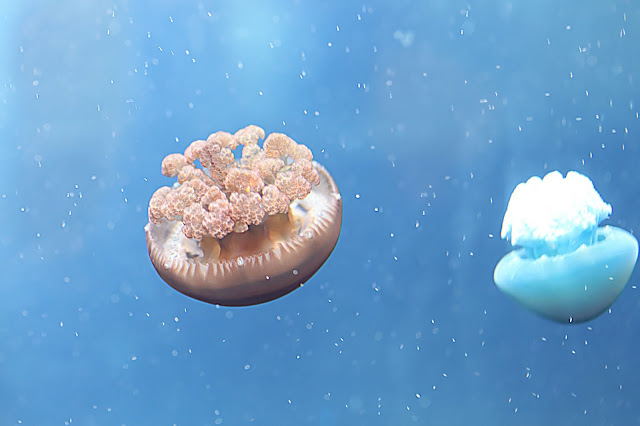




























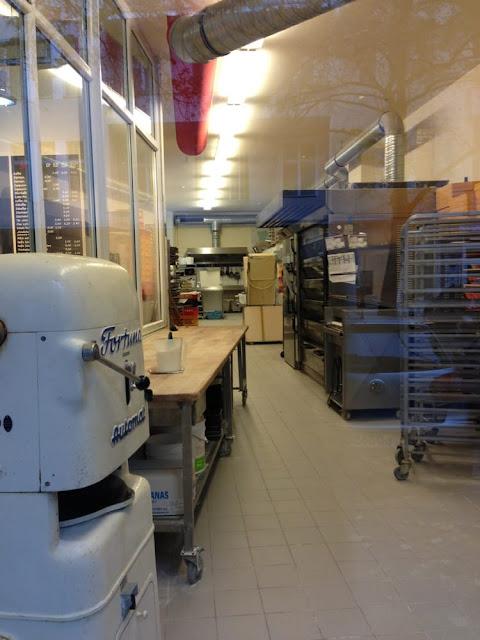












































































_COA.svg.png)



























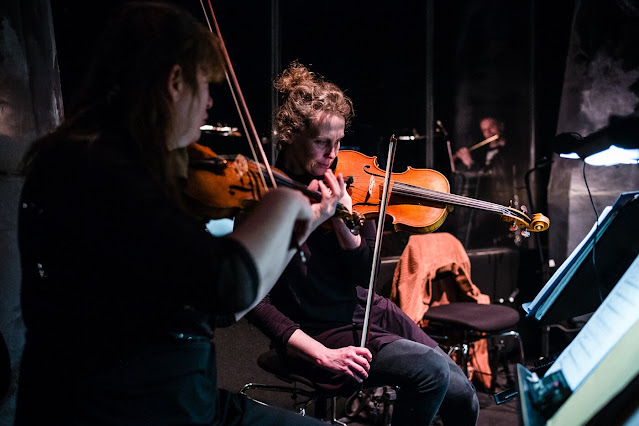





































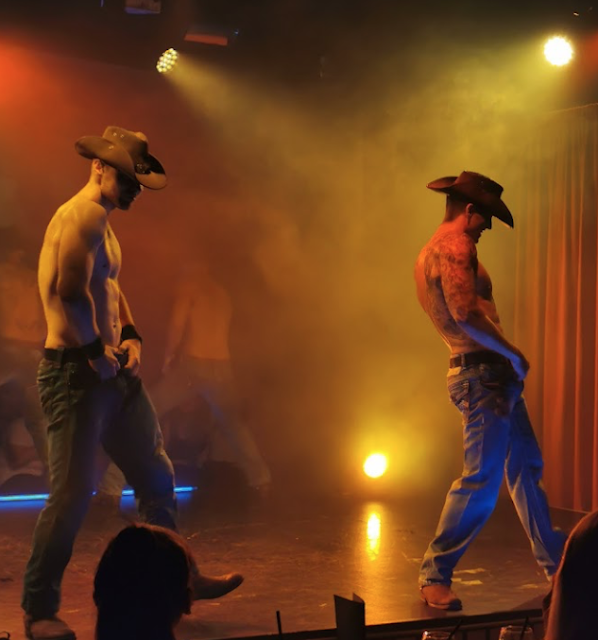














No comments:
Post a Comment
Don't be shy: leave your comments :)